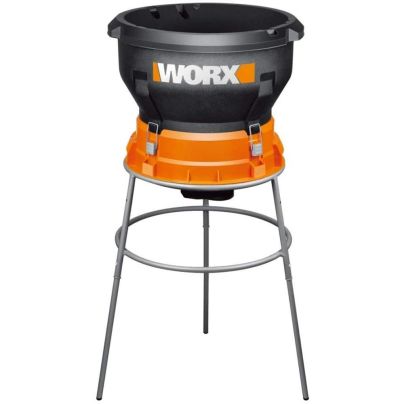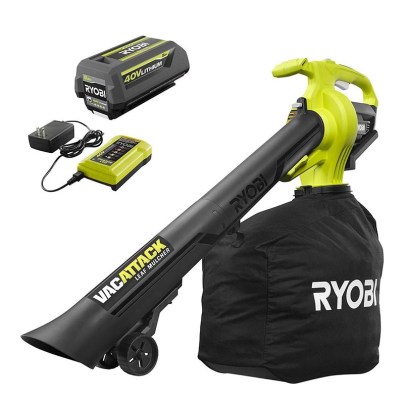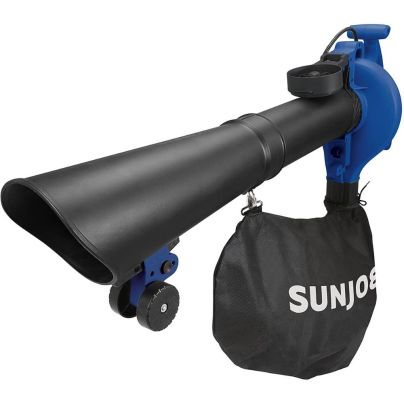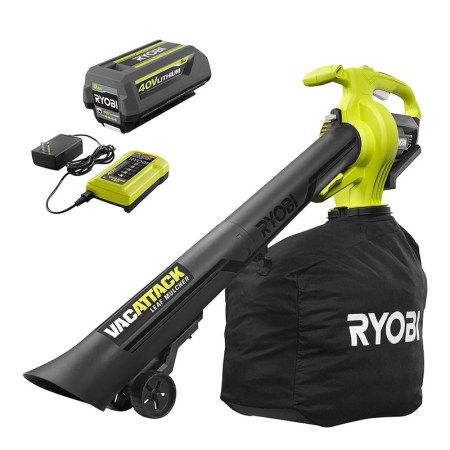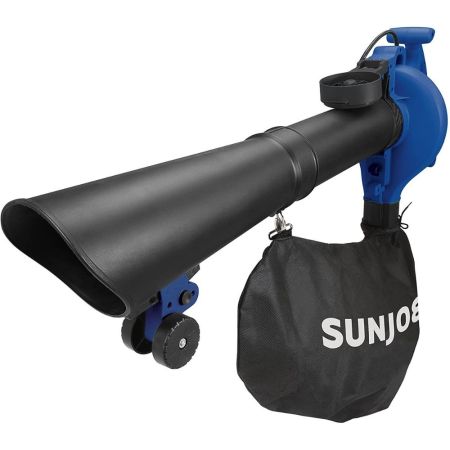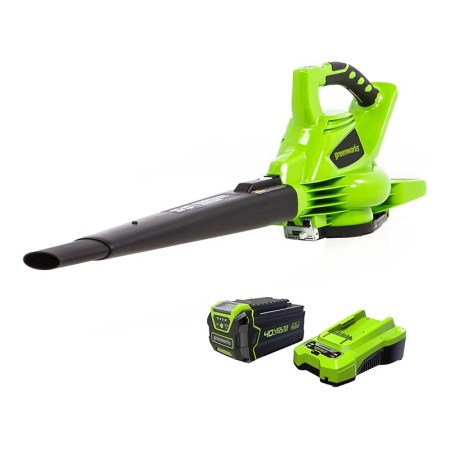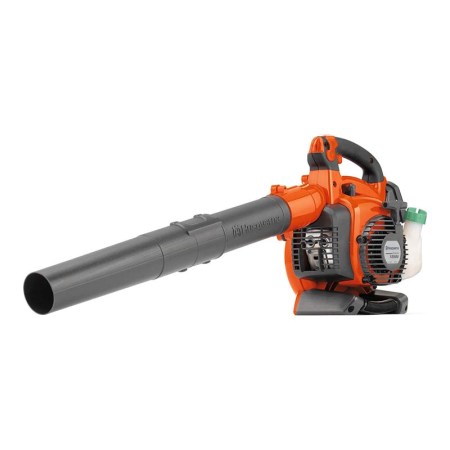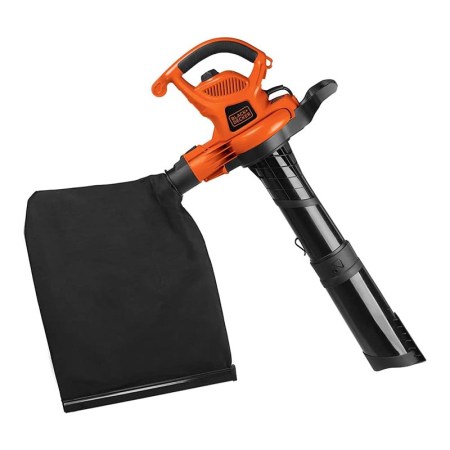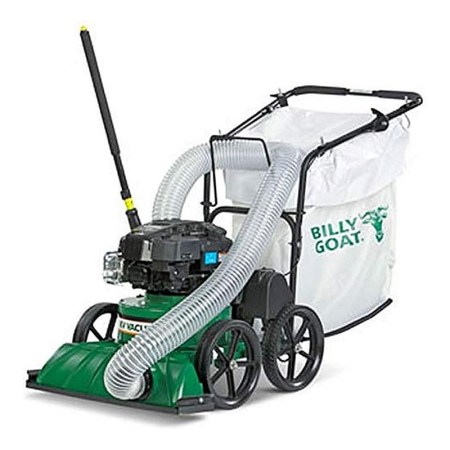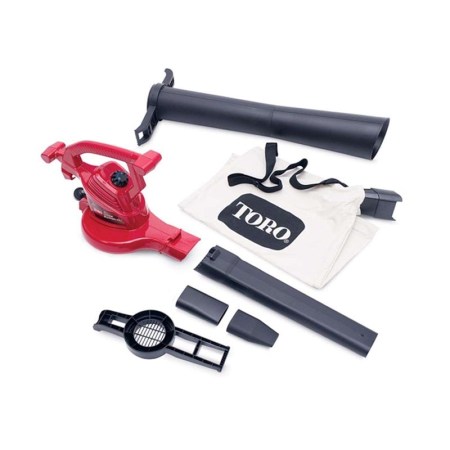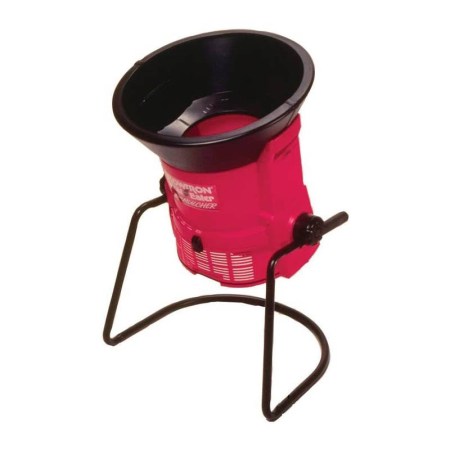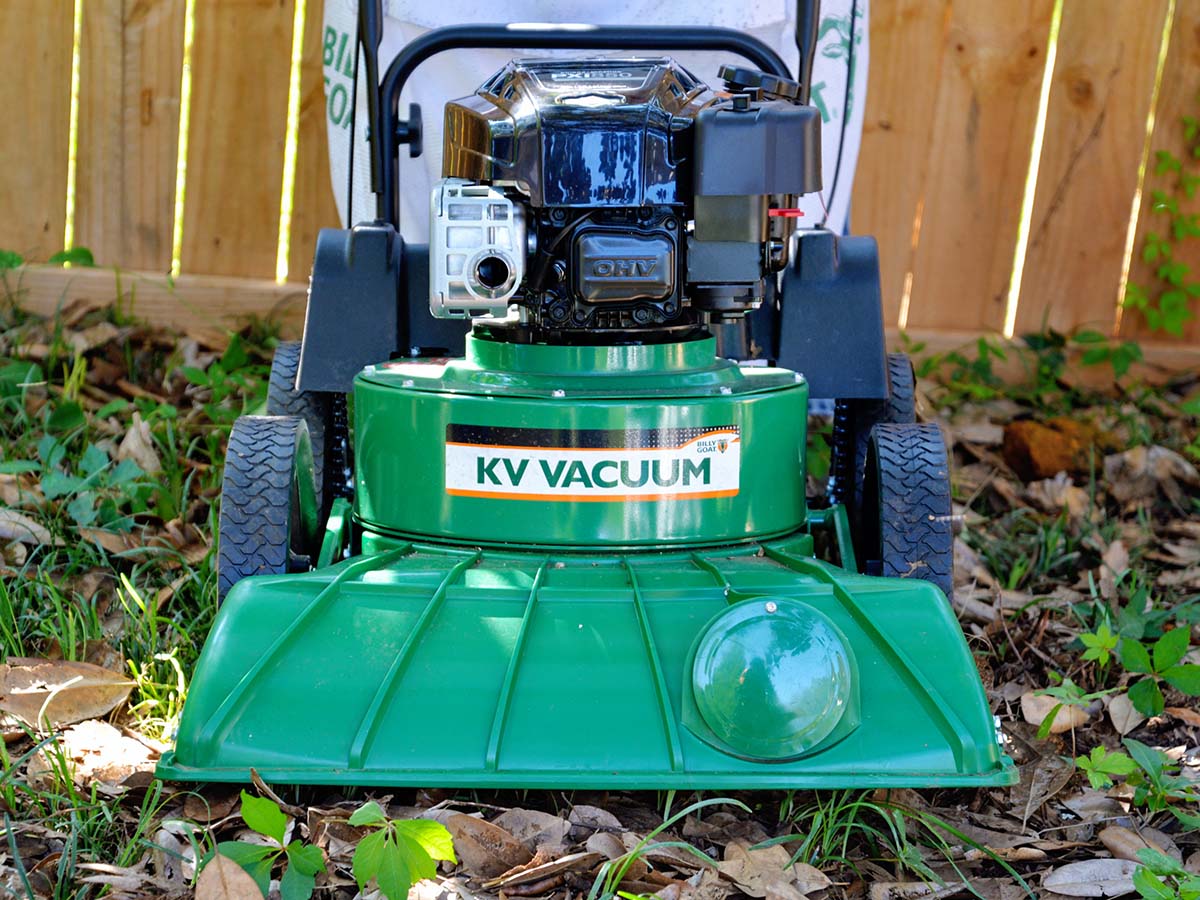
We may earn revenue from the products available on this page and participate in affiliate programs. Learn More ›
Few sights are as lovely as the red and gold hues of falling leaves, but having to rake and bag them—with no leaf mulcher in sight—can quickly make leaves lose their appeal. It only takes one good soaking rain for dried leaves to become a soggy mess, increasing the risk of lawn disease.
Shredding leaves in a leaf mulcher significantly reduces their bulk and, better still, creates organic mulch for use around perennial plants. We tested some of the best leaf mulchers to make yard cleanup easier, whether recycling the leaves at home or bagging them up to place at the curb.
Finding the right leaf mulcher for your needs depends on the amount of leaf accumulation, yard size, and your leaf collection preferences. Our test group included models with a variety of strengths and purposes. Our Best Overall pick is the Worx WG430 13-Amp Electric Leaf Mulcher thanks to its fast shredding and high efficiency. Check out our reviews based on this hands-on testing, and then read on to learn what to look for when shopping for the best leaf mulcher.
- BEST OVERALL:Worx WG430 13-Amp Electric Leaf Mulcher
↓ Jump to Review - RUNNER-UP: Ryobi 40V Vac Attack Leaf Vacuum/Mulcher Kit
↓ Jump to Review - BEST BANG FOR THE BUCK: Worx WG512 Trivac Electric 3-in-1 Leaf Mulcher
↓ Jump to Review - BEST CORDLESS: Greenworks 40V 340 CFM Cordless Battery Leaf Blower
↓ Jump to Review - BEST GAS: Husqvarna 125BVx Gas Leaf Blower
↓ Jump to Review - BEST ELECTRIC: Black+Decker 12-Amp Leaf Blower/Vacuum/Mulcher
↓ Jump to Review - BEST WALK-BEHIND: Billy Goat KV601SP Lawn and Litter Vacuum
↓ Jump to Review - BEST 3-IN-1 COMBO: Toro Ultra Leaf Blower/Vacuum/Mulcher
↓ Jump to Review - ALSO CONSIDER: Flowtron LE900 Leaf-Eater Mulcher/Shredder
↓ Jump to Review

How We Tested the Best Leaf Mulchers
We spent 5 days in a half-acre backyard grinding up fallen leaves with 11 different leaf mulchers. Each mulcher had to run the gamut of large and small as well as dry and wet leaves, along with whatever small twigs, pine cones, and acorns found their way into the mix. Note: While our testing included the Sun Joe CJ601E Electric Wood Chipper, we found that its narrow hopper and flywheel chopper are designed for grinding up sticks, not for shredding leaves.
The first testing day was under dry conditions, with slightly moist leaves that we had recently blown into a pile. For the handheld vacuum/mulcher models, we held the suction tube at or slightly above the level of the leaves, as they should be used according to each manufacturer’s instructions. We simply turned on and fed the stand-alone models by the armload.
On the second day, we attempted to put the vacuum/mulcher models through more stressful conditions, feeding them with wet, matted leaves and large, leathery magnolia leaves. During this test, we also pushed the suction tubes farther into the leaf piles to see if they would become clogged or simply stop. To stress the stand-alone models, we used large baskets to “force-feed” extra-large quantities.
Ultimately, all of the models that made our list passed both tests. For the average testing, each mulcher shredded without hesitation, filling its bag. During the stressful testing, several clogs occurred, but none were catastrophic, nor did they take more than a little thump on the side of the suction housing to clear the clog. In all, each leaf mulcher in this group worked as expected or even better than expected.
| Testing Stats | |
| Products tested | 11 |
| Time spent testing | 5 days |
| Tests performed | 4 |
| Price range | $114 to $2,100 |
Our Top Picks
We put several leaf mulchers to the test in an average backyard to determine real-life performance. The following models proved to be dependable, reliable, and effective at shredding dry leaves. Here’s how some of the best leaf mulchers on the market fared when we put them through their paces.
Best Overall
Worx WG430 13-Amp Electric Leaf Mulcher
Our Ratings: Ease of Use 5/5; Performance 4.5/5; Noise 4/5; Value 5/5
Product Specs
- Type: Stand-alone
- Power source: 13-amp plug-in electric
- Mulching ratio: 11:1
What We Like
- Easy setup and takedown
- Shreds directly into a disposable leaf bag
- Shreds much faster than vacuum types
What We Don’t Like
- Single-task tool
- In storage most of the year
- Leaves must be lifted to feed the hopper
This electric Worx leaf mulcher is designed with the sole purpose of shredding leaves, which it does quickly and efficiently. The upright model operates via a heavy-duty 12- to 14-gauge extension cord, and its rugged 13-amp motor provides an 11:1 mulch reduction ratio.
The cylindrical molded plastic unit sits atop strong steel legs (minor assembly required). Rather than metal or plastic blades, this leaf mulcher uses the same type of plastic line found in string trimmers. It features a large intake hopper and shreds up to 53 gallons of leaves per minute.
The Worx WG430 shreds much faster than any blower/vacuum-type leaf mulcher we tested. We dropped leaves into the hopper by the armload (or basket full), and they were gone before we could pick up the next load, allowing us to fill a 30-gallon trash bag with shredded leaves in less than 5 minutes. The trimmer lines shredded five bags of leaves and other fine yard debris before we needed to replace them, a task that took under 2 minutes. For users with a lot of leaves to shred, this mulcher does the job quickly and efficiently, even bagging the material for disposal.
Read our full review: Worx WG430 13-Amp Electric Leaf Mulcher
Get the Worx WG430 leaf mulcher at Amazon, Lowe’s, or The Home Depot.
Runner-up
Ryobi 40V Vac Attack Leaf Vacuum/Mulcher Kit
Our Ratings: Ease of Use 4/5; Performance 4.5/5; Noise 5/5; Value 4/5
Product Specs
- Type: Handheld
- Power source: 40-volt (V) 5-amp-hour (Ah) battery
- Mulching ratio: 16:1
What We Like
- Cordless leaf vacuum mulcher kit includes 5 Ah battery and charger
- 2-in-1 vacuum and mulcher with tough metal impeller
- 12-minute runtime per charge on high; fills eight 30-gallon bags
- Large debris bag
What We Don’t Like
- Does not include a shoulder strap
- Vacuum and mulcher only; does not convert into a leaf blower
A handheld cordless leaf blower vacuum mulcher offers the freedom of mobility and easy storage. The Ryobi 40V Vac Attack leaf mulcher vacuum uses a durable steel impeller to shred leaves and debris to 1/16 of their original size and produces enough vacuum power to fill eight 30-gallon bags in 12 minutes. It conveniently shares the same 40V cordless power platform with more than 80 other Ryobi tools and comes with a 5 Ah battery and charger.
This leaf vacuum/mulcher performed very well with both freshly fallen dry leaves (on the low-speed setting) and old, moist, and matted leaves and debris (on the high-speed setting). The heavy-duty vacuum bag held more debris than most of the other handheld units we tested, which was ideal for bigger piles. It was easy to unload directly into lawn and leaf bags. However, we also noted that this tool worked best where the leaves were already piled up, since even with adjustable wheels on the suction tube, the large bag made it more difficult to maneuver.
Being a “single tasker” might be a con for some shoppers. Unlike other cordless leaf suction machines, the Ryobi vacuum/mulcher does not convert to a leaf blower. Those who are most interested in space savings might instead prefer a three-in-one option. In our tests, we alternated between blower and vacuum frequently, and it would have been more of a hassle to switch back and forth. We preferred to keep a dedicated leaf blower on hand at all times.
Get the Ryobi leaf mulcher at The Home Depot or Amazon (tool only).
Best Bang For The Buck
Worx WG512 Trivac 12-Amp Electric 3-in-1 Leaf Mulcher
Our Ratings: Ease of Use 5/5; Performance 4.5/5; Noise 4/5; Value 4/5
Product Specs
- Type: Handheld
- Power source: 12 amp plug-in electric
- Mulching ratio: 16:1
What We Like
- Easy to use
- Stress-free, ergonomic design
- Switch modes by turning a dial
What We Don’t Like
- Struggles with extra-large leaves
- Limited by extension cord length
- Suction tube may be too short for some users
The Worx WG512 is much improved over the previous Trivac incarnation. It uses a single tube for both blower and vacuum modes, with an easy-to-use dial to switch modes. The 12-amp corded electric motor uses an upgraded metal impeller fan to grind leaves and debris at a mulching rate of 16:1. It weighs in at 8.6 pounds and moves air at a rate of up to 600 cubic feet per minute (CFM).
In our tests, the WG512 showed a good balance of power and relatively quiet operation, with a noise operating level listed at 70 decibels. It easily pushed wet and dry leaves around the yard and then quickly dispatched them in vacuum/mulcher mode. When we forced the issue by shoving the vacuum tube deep into a leaf pile, the tube clogged briefly but righted itself as soon as we pulled it back out of the pile. The single-tube design, simple mode change dial, and better-than-average air handling ability made this model stand out. As a handheld corded electric model, it seems best for small to midsize yards with moderate to heavy leaf cover.
Get the Worx WG512 leaf mulcher at Amazon, Lowe’s, Walmart, or Worx.
Best Cordless
Greenworks 40V 340 CFM Cordless Battery Leaf Blower
Our Ratings: Ease of Use 4/5; Performance 4/5; Noise 5/5; Value 3.5/5
Product Specs
- Type: Handheld
- Power source: 40V lithium-ion rechargeable battery
- Mulching ratio: 10:1
What We Like
- Cordless; offers more freedom than corded models
- 20 minutes of runtime per charge
- Battery is compatible with all Greenworks 40V tools
- Bag includes shoulder strap
What We Don’t Like
- Somewhat underpowered for moving the heaviest debris
- Battery makes the machine heavier
Put the power of lithium-ion energy to work with the Greenworks cordless leaf mulcher. This battery-operated mulcher includes a high-performance G-MAX 40V lithium-ion battery that produces up to 340 CFM of blowing power and runs up to 20 minutes on the highest mode. It offers six speed adjustments and both a narrow blowing tube and a wider-angle vacuum tube for versatile yard cleanup. The mulcher weighs 9.92 pounds, features a 10:1 reduction ratio and aluminum-alloy impeller blades, and includes a reusable mulch collection bag.
We wanted to see if this cordless tool had adequate power to collect and shred leaves without changing batteries or running out of charge. After using it in blower mode to collect a pile of leaves, we switched to vacuum mode and proceeded to fill the collection twice, plus another partial bag. Altogether, it worked for more than 20 minutes on the highest power setting.
Get the Greenworks leaf mulcher at Amazon, Walmart, Best Buy (80-volt model), or Greenworks.
Best Gas
Husqvarna 125BVx Gas Leaf Blower
Our Ratings: Ease of Use 4/5; Performance 5/5; Noise 4/5; Value 4.5/5
Product Specs
- Type: Handheld
- Power source: 28-cubic-centimeter (cc) 2-cycle gas engine
- Mulching ratio: 16:1
What We Like
- Gas engine eliminates recharge time
- Stronger airflow than cordless models
- Ergonomic design, anti-vibration handle, and cruise control
- Grinds 1.3 cubic yards of yard waste to fit inside 17-gallon vacuum bag
- Easy to start; engine starts on the first or second pull
What We Don’t Like
- Reconfiguring from blower to vacuum for leaves is a bit cumbersome
Shoppers with bigger lots and more leaves to deal with may find a gas-powered leaf mulcher most convenient. The compact handheld Husqvarna 125BVx saves storage space while eliminating the hassle of charging batteries and running extension cords. It is powered by a 28cc 2-cycle engine that generates airflow of 425 CFM at speeds up to 170 miles per hour (mph). In vacuum/mulcher mode, it mulches leaves and other small yard waste at a 16:1 ratio. We also selected this model for our Best Leaf Vacuums guide.
Several details on this machine make it a superior choice. The easy-crank engine features a low resistance recoil starter in addition to an auto return stop switch to eliminate flooding at startup. In our tests, it started on the first or second pull every time. Then, the operator can use the variable trigger for immediate responsiveness or set the cruise control lever for consistent blow force to eliminate hand fatigue. Other comfort features include an overall lightweight build (just over 9.5 pounds), an anti-vibration handle, and an ergonomic design with the blow tube in line with the handle for optimal performance. It also includes a shoulder strap to reduce user fatigue.
We noted the vacuum’s powerful suction and resistance to clogging. It filled the bag noticeably faster than the battery and electric-powered models, but we did not record the times. Also, the metal mulching impeller worked aggressively on everything small enough to enter the tube, including hard items like sticks and acorns. Although we didn’t love the curved vacuum tube design at first (the other handheld blower/vacuums had only a short, straight pipe coming off the blower into the bag), it functioned well once we determined the best way to position it.
Get the Husqvarna leaf mulcher at Amazon or Lowe’s.
Best Electric
Black+Decker 12-Amp Leaf Blower/Vacuum/Mulcher
Our Ratings: Ease of Use 4/5; Performance 4.5/5; Noise 4/5; Value 5/5
Product Specs
- Type: Handheld
- Power source: 12-amp plug-in electric
- Mulching ratio: 16:1
What We Like
- Convenient and affordable
- Corded electric power offers unlimited runtime
- Metal impeller grinds debris to a fine 16:1 ratio
- Airflow of 400 CFM and 250 mph; comparable to the power of handheld gas blowers
What We Don’t Like
- Extra parts must be stored for the unused configuration
Blow dry leaves into a pile and then vacuum them up and shred them with this three-in-one electric leaf blower and mulcher from Black+Decker. This handheld machine weighs in at 8.1 pounds, and it includes a detachable shoulder strap, reusable bag assembly, and three disposable bags. The unit boasts variable-speed control with up to 400 CFM airflow and air speed up to 250 mph. It also features a tough metal impeller that produces a 16:1 reduction ratio, resulting in finely shredded leaves that can be added to the compost bin or used to mulch plants. A heavy-duty 12- to 14-gauge exterior extension cord (sold separately) is needed to operate this versatile tool.
We liked the convenience of having a blower, vacuum, and mulcher in one tool. Changing from blower to vacuum was easy and only took about 1 minute: Using a flathead screwdriver, remove the blower tube and air intake cover and attach the vacuum tube and leaf collection bag. This tool performed well in both modes, with ample power and minimal clogging in vacuum mode.
Get the Black+Decker leaf mulcher at Amazon, Walmart, or Target.
Best Walk-behind
Billy Goat KV601SP Lawn and Litter Vacuum
Our Ratings: Ease of Use 5/5; Performance 5/5; Noise 4/5; Value 4/5
Product Specs
- Type: Walk-behind
- Power source: 190cc gas engine
- Mulching ratio: 6:1
What We Like
- Large 40-gallon zipperless vacuum bag
- Rear-wheel self-propelled feature; great on hilly terrain
- Powerful 1,700 CFM suction; no need to blow or rake leaves before vacuuming
- 4-cycle engine produces less noise and lower emissions than gas-powered blower
What We Don’t Like
- More than twice the price of a backpack leaf blower and stationary mulcher
- Single-task tool; must be stored for months
For large properties where leaf-drop season lasts months rather than weeks, a dedicated walk-behind leaf vacuum and mulcher makes the job much more manageable. The self-propelled Billy Goat KV601SP is an excellent choice for bigger yards with lots of trees. It comes equipped with a 190cc gas engine to power the 27-inch vacuum nozzle with a massive 1,700 CFM of airflow. The strong suction picks up leaves, seeds, mulch, blooms, branches, and litter from lawns, landscape beds, and pavement. A metal impeller shreds the material at a 6:1 reduction ratio, and the large 40-gallon zipperless vacuum bag reduces downtime for dumping. For improved functionality and efficiency, a 7-foot vacuum hose attachment is available (sold separately).
The powerful suction and steady-rolling self-propelled feature made this vacuum and mulcher a pleasure to operate. However, the price and single-task nature of the machine realistically limits its practicality to large properties with extensive leaf-cleaning needs. Moving two to three times the air volume of the other lawn vacuum mulchers we tested, it worked incredibly fast: 5,000 square feet of lawn and 1,000 square feet of pavement vacuumed with the debris mulched and bagged in about 15 minutes, or about the same amount of time it took to blow leaves into piles for the other leaf mulchers.
Get the Billy Goat leaf mulcher at Amazon (with optional vacuum hose).
Best 3-in-1 Combo
Toro Ultra Leaf Blower/Vacuum/Mulcher
Our Ratings: Ease of Use 5/5; Performance 4.5/5; Noise 5/5; Value 5/5
Product Specs
- Type: Handheld
- Power source: 12-amp plug-in electric
- Mulching ratio: 16:1
What We Like
- Corded electric power; unlimited runtime
- Tool-free switching between blower and vacuum modes
- 8.5 pounds; lightweight and easy to maneuver
- Fine mulching ratio; efficient disposal and rapid composting
What We Don’t Like
- Slightly underpowered for bigger piles and heavy, wet leaves
- Mobility is limited by cord length
Electric three-in-one leaf mulchers are popular because they’re so easy to use, and this Toro model was the breeziest of the bunch we tested, largely thanks to the toolless switching from blower to vacuum. The machine generates up to 340 CFM of blowing force to move leaves, small twigs, and other debris from around HVAC units, decks, and fences. We found that to be plenty of power to gather all of the leaves into a pile and then suck them up into the metal impeller leaf shredder. The only material that slowed down this machine was coarse, wet, matted leaves.
The mulcher weighs just 8.5 pounds, making it easy to carry. It also includes a reusable collection bag and two additional tube attachments to concentrate air power. The impeller features magnesium-serrated metal blades that resist rust and corrosion. It shreds leaves at a 16:1 reduction ratio, a small size that’s sure to quickly decompose in a compost pile and also suits layering around plants to reduce weeds and retain soil moisture.
Get the Toro leaf mulcher at Ace Hardware.
Also Consider
Flowtron LE900 Leaf-Eater Mulcher/Shredder
Our Ratings: Ease of Use 4/5; Performance 5/5; Noise 4/5; Value 4/5
Product Specs
- Type: Stand-alone
- Power source: 5.9-amp plug-in electric
- Mulching ratio: Adjustable to 30:1
What We Like
- Comfortable working height; easier to load leaves into hopper
- Easy access—can adjust angle of the hopper from vertical to a slight tilt
- Mulches directly into disposal bags, which can be set up on a trash barrel
What We Don’t Like
- Base and housing assembly process is unnecessarily clumsy
- Stand is too low to load standard paper lawn and leaf bags
For yards with lots of leaves, an electric stand-alone leaf mulcher shredder is often the best bet, and this Flowtron model is a worthy contender. Its 5.9-amp motor will run all day, with just a few stops along the way to install new trimmer lines. It grinds up dry leaves at a rate of up to 55 gallons per minute. Choose from fine, medium, and coarse mulching settings, based on material. The fine setting is great for dry, thin material like pine needles and dry leaves, while the coarse setting is better suited for wet matted leaves and grass clippings. An onboard safety shutoff kills the engine if it overheats.
This stand-alone model almost made the cut as our best overall pick since it was a viable option in terms of performance. However, the setup proved to be far less user-friendly. The plastic hopper arrived in two halves, requiring assembly by aligning tabs and installing four screws. Assembling the two halves of the metal stand requires two screws, two brackets, and two wing nuts. Though this wasn’t difficult, these engineering choices made the process more clunky and complicated than it had to be. In action, we liked the lower working height but found it necessary to use trash bags instead of paper lawn and leaf bags for collection because the base is so low to the ground.
Get the Flowtron leaf mulcher at The Home Depot or Walmart.
Jump to Our Top Picks
What to Consider When Choosing a Leaf Mulcher
Consider ease of operation, efficiency, and performance when selecting the best leaf mulcher for a specific job. These factors are dependent on the following features.
Types of Leaf Mulchers
Leaf mulchers are all designed with one primary task: shredding leaves, typically with spinning impeller blades. Yet certain features are worth considering when choosing the type of mulcher that best suits a particular yard or job. Leaf mulchers offer a variety of power options, such as an electrical cord, a gas engine, or a rechargeable battery. In addition, while many leaf mulchers are handheld, some are stationary. As with all power tools, read and follow the manufacturer’s safety precautions, and do not operate a leaf mulcher when small children are nearby.
Corded Electric
Corded leaf mulchers, which fall into the electric leaf blower category, feature motors rated in amps that range from around 8 to 14 amps. The higher the amps, the more powerful the motor. Corded models are quieter than gas-powered models, and there is no fuel to mix or flammable gas to store. While charging a battery isn’t a concern with a corded leaf mulcher, users will be limited to the length of an extension cord, which usually tops out at around 100 feet. A handheld corded mulcher weighs about 6 to 9 pounds, so it’s easy to use without developing shoulder or arm fatigue.
Gas
Gas-powered leaf mulchers provide ample power with no risk of tripping over an extension cord and no battery to charge. The engine of a gas leaf mulcher is rated by its size in cubic centimeters. The larger the number, the more powerful the engine. An engine is also rated by the type of fuel it requires: A 2-cycle gas engine requires mixing gasoline with engine oil at a ratio determined by the manufacturer, while a 4-cycle gas engine runs on pure gasoline only. While a gas leaf mulcher is portable because it isn’t tethered to a cord, it will weigh quite a bit more—between 10 and 17 pounds—than any corded or cordless model. Another downside to gas models is the fumes they emit.
Cordless
Like corded mulchers, battery-operated cordless leaf mulchers won’t require users to mix fuel or be exposed to toxic fumes. Cordless leaf mulchers are ultimately portable since they’re fairly lightweight and aren’t restricted by the length of a cord; however, the average lithium battery runtime is between about 15 and 35 minutes, depending on the voltage. These rechargeable batteries average 20 to 40V. The higher the voltage, the longer the runtime. Buying a second battery and keeping it charged will allow for much longer use of a cordless mulcher.
Handheld vs. Stand-Alone
The majority of leaf mulchers are handheld models that vacuum up leaves and then pass them through spinning impeller blades for shredding. Many handheld models also feature leaf-blowing capability to blow leaves into piles for easier vacuum collection.
However, some shoppers prefer the ease of use of a stand-alone model. You can position these leaf mulchers in a central spot in your yard and dump dried leaves into a top intake chute—known as a hopper—for shredding. A collection bag attaches to a discharge chute at the bottom of the hopper.
Blades
Most leaf mulchers have metal mulching blades that spin at rapid speeds to chop and shred leaves into tiny bits, but some models use heavy-duty plastic blades or even string-trimming line. All three options can shred leaves, but metal blades are often more durable.
Mulching Ratio
The mulching ratio, also known as the reduction ratio, indicates how much the tool will reduce the leaves’ overall size. For example, a mulching ratio of 10:1 indicates the mulcher will reduce 10 bags of dried leaves to shreds that will fit in a single bag. Typical mulching ratios range from 8:1 to 18:1, with the highest ratios producing the smallest shreds. Keep in mind that small shreds will decompose more quickly in a compost pile.
Capacity
Leaf mulcher capacity relates to the amount of air the machine moves in CFM. Most corded and cordless leaf mulchers range from around 175 to 500 CFM, with the highest-capacity models designed for heavy-duty leaf clearing. Gas leaf mulchers, which are more powerful, tend to have higher capacities, ranging from 450 to 700 CFM.
Functions
Stand-alone leaf mulchers have a single function: They shred leaves dropped into their hoppers. Handheld models often do more, including blowing leaves into a pile and then vacuuming them up for shredding. While a few handheld leaf mulchers vacuum but do not blow, models with three functions operate as leaf blowers and leaf vacuums.
Ease of Use
Both corded and cordless leaf mulchers are easier to use than gas models because they don’t require mixing fuel, adding engine oil, servicing a carburetor, or using a hand recoil to start the engine. However, fans of gas models may consider the greater power derived from a gas-powered leaf mulcher to be worth the extra effort.
Noise
All power tools, including leaf mulchers, make some noise, but cordless and corded models are fairly quiet at approximately 60 to 63 decibels—comparable to the sound of conversational speech. Gas-powered leaf mulchers are quite a bit louder at around 85 to 90 decibels, or comparable to the sound of busy street traffic from the curb. Shoppers will want to check their city ordinances prior to purchase; an electric leaf mulcher may be preferable or required in communities where loud noises are discouraged or prohibited.
FAQs
Yard cleanup may seem like a straightforward task, but first-time shoppers of leaf mulchers might need more information. Check out the answers to some of the most frequently asked questions about leaf mulchers.
Using a leaf mulcher will certainly save you time and labor. Plus, spreading a layer of shredded leaves around the base of plants helps reduce weed growth, improves soil content, and retains moisture in the soil.
While both items will produce small bits of biodegradable material for use as mulch around plants or for adding to a compost pile, a leaf mulcher handles only leaves and tiny twigs, while a wood chipper shredder can shred small tree branches.
A leaf mulcher is only intended for dry leaves. Avoid sucking up acorns and twigs larger than 0.125 inch in diameter and don’t mulch green leaves or grass clippings. Green plant matter can clog the blades of a leaf mulcher.
Yes, shredded leaves take much less time to decompose. Not only do shredded leaves offer microbes a larger surface area for them to do their work, but shredded leaves are also less likely to clump up. This would make decomposition take even longer.
It takes about 1 year for chopped leaves to decompose, while whole leaves might not decompose completely for 2 to 3 years.
Wet leaves can create clogs in leaf mulchers. Machines that are more heavy duty can usually handle wet leaves more easily, though.
Leaf mulchers should last at least 5 years. After that, lifespan depends on maintenance and frequency of use.
Meet the Tester
Mark Wolfe is a writer and product tester with a background in the nursery and landscaping industries. For more than 20 years, he mowed, edged, planted, pruned, cultivated, irrigated, and renovated beautiful landscapes. Now, he tests and writes reviews about the latest outdoor power equipment, hand tools, lawn-care products, and other outdoor living goods.
Additional research provided by Glenda Taylor.
